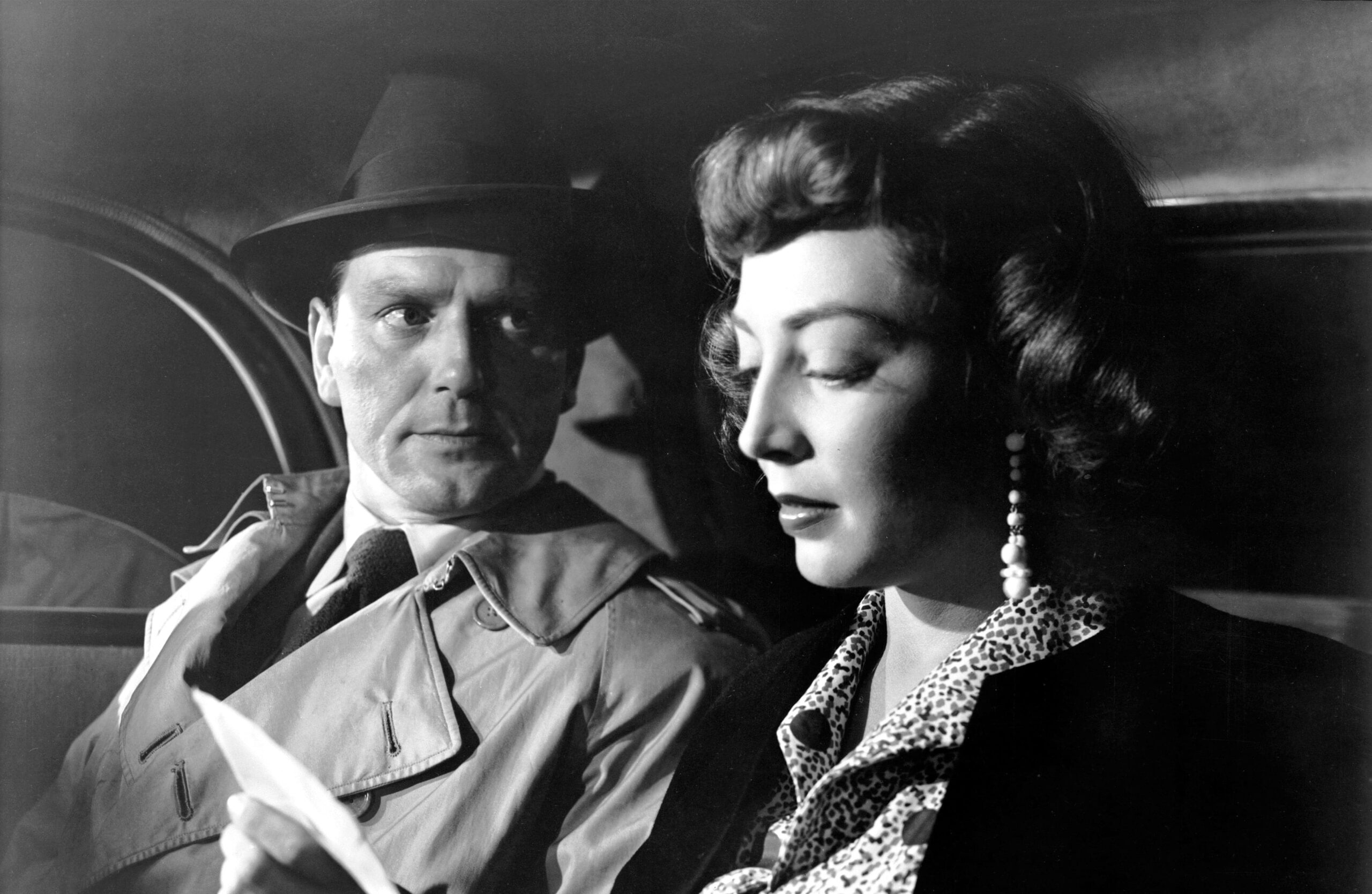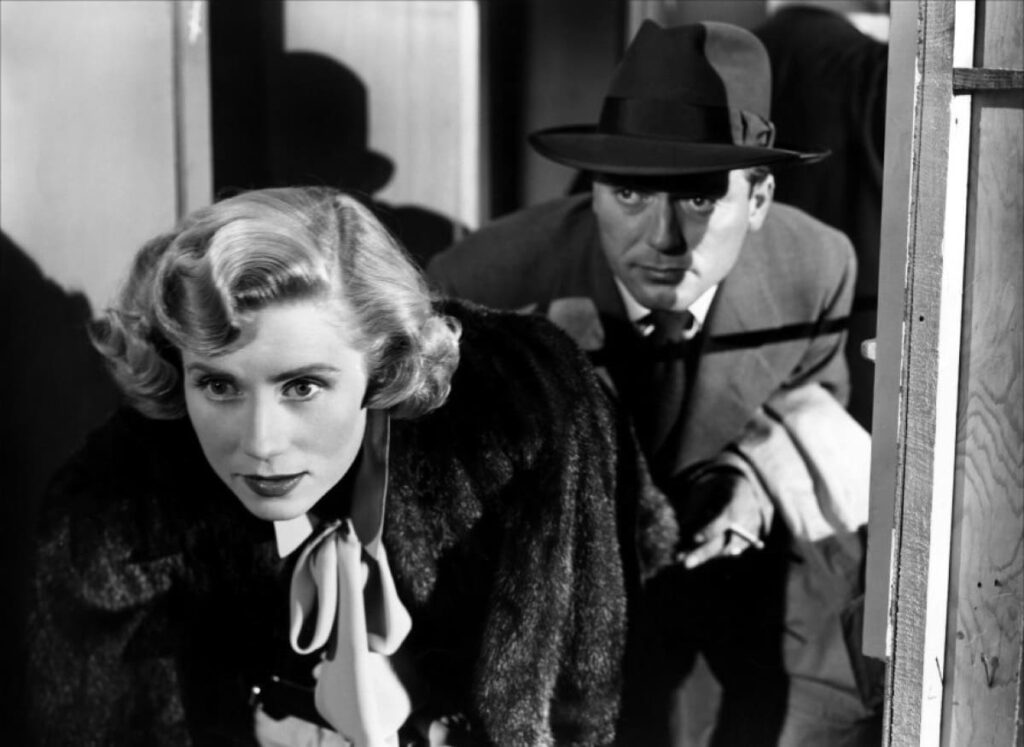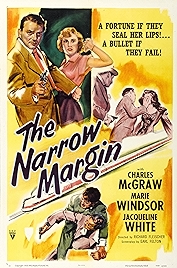Dangers on a train? If it’s jeopardy on board a speedling locomotive you want, The Narrow Margin is the way to go. Made for buttons, shot in 13 days and with no big tentpole stars, it made the name of director Richard Fleischer, a B-movie guy bumped straight up to the big time once it eventually debuted.
“Eventually” because RKO’s owner Howard Hughes sat on it for two years. There are many theories as to why – one prime candidate is that he was going to reshoot bits of it with bigger names to capitalise on its obvious qualities. Another that the film got caught up in Hughes’s machinations as he tried to buy up all of RKO, only to sell it again almost immediately. Yet another that he forgot he had it in his screening projector room.
Made in 1950 and released in 1952, it was RKO’s biggest film of the year, not bad for a B movie that only runs 71 minutes long. Moving at a furious pace, in the first five minutes it’s set up its story – the widow of a mobster who has possession of his “pay-off list” is being escorted to Los Angeles to testify in a trial. All the cops have to do is keep her safe. The bad guys obviously want the opposite, their problem being that they don’t know what she looks like.
The mobster’s moll is played in spitfire floozie style by Marie Windsor, all bristling flirtation against Charles McGraw as Brown, the hostile cop who never wanted this gig in the first place but is going to do his duty by the law, even though he clearly thinks the woman he’s protecting is a piece of trash.
Against them are the master/blaster, Greenstreet-and-Lorre duo of bad guys Yost (Peter Brocco), the brains who’s crawled out from under a stone, and Kemp (David Clarke), the sweaty muscle, while caught somewhere in the middle are Paul Maxey, as a fat guy on the train whose bulk causes ructions in the narrow corridors, and Jacqueline White, as a demure mum travelling with her son.
(Digression: as I write, I see that White, now aged 101, is still with us.)
Earl Felton’s brilliantly economical screenplay not only sets up the plot in a brisk one-two-three, he keeps it moving, expertly weaving both Maxey and White into the story.
Fleischer’s direction is similarly smart, fast and lean. There is no musical soundtrack. Instead it’s sound – of announcements, of people burbling, of the train itself – that provides the aural accompaniment. And there’s nothing in the way of special effects, not even rocking train carriages. Either the actors simulated the train’s movements as they weaved down corridors (McGraw does it very well) or the camera of cinematographer George Diskant does it for them, with a wobble.
Film noir was cheap to make, which is why Howard Hughes made so many of them, and under his brief stint as the sole boss of RKO the studio became known for making high quality noirs, of which The Narrow Margin must be one of the best.
McGraw, Windsor, White, Clarke, Maxey, Brocco – none of them household names yet all on fire in roles they must have sensed gave them a real opportunity to shine. The scenes between McGraw and Windsor in particular are lightning in a bottle. They also get the screenplay’s best lines, which helps. Him to her: “You make me sick to my stomach.” Her to him: “Well use your own sink.”
Director Richard Fleischer went on to make big budget movies, like The Vikings, Doctor Dolittle, Soylent Green and, er, Red Sonja. As for his stars, McGraw went on to mostly making “guest starring” appearances in long-running TV series. As, mostly, did Windsor, Maxey, Clarke and Brocco. White never acted again. For a lot of people on the screen, this was their finest hour.
The Narrow Margin – Watch it/buy it at Amazon
I am an Amazon affiliate
© Steve Morrissey 2023


